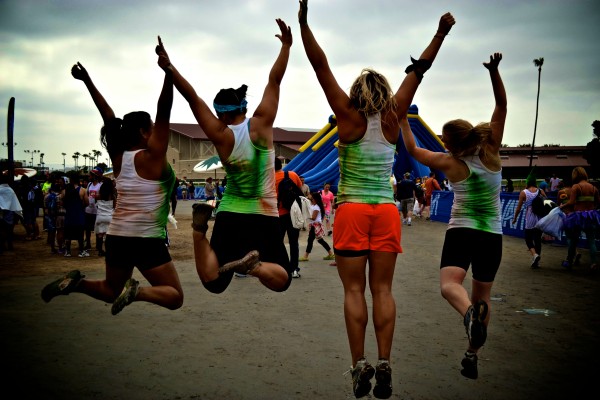
Yesterday, I shared the mental shift it took to catalyze change, and today's post covers how I turned my "stuff that matters" list into actionable priorities. Here's how I tackled each item on my list, in the hopes that it inspires you to take on your own.
1. Have more downtime than work time.
This was a Herculean task: at the time, I was working between 60 and 70 hours a week. Here's what I did:
- Tracked my workweek. Here's how you can do the same.
- Analyzed my workload. See the link above for Step 2 in this process.
- Jettisoned low-value, high-effort work.
- Enhanced my own productivity to do more work in less time. I tweaked the Pomodoro Technique to supercharge work periods and leveraged power hours throughout the day to crank out work.
- Measured my workweek. Not only did I track the breakdown of my workday, I also kept a rough log of my total weekly hours spent on work, including weekends.
- Created urgency. I leveraged Parkinson's Law by scheduling afternoon activities that I couldn't miss. Eventually, this opened up the door to my midday workouts.
2. Have a full night's rest (almost) every night.
This was my favorite list item to tackle, because I love the luxury of quality sleep. Here's how I regained my "beauty rest":
- Tracked my sleep periods. Sense a pattern? My thinking is that you cannot improve what you cannot measure.
- Cut back on screen time. Some research links screen time with sleep interference, so I made a habit of leaving my iPhone and iPad out of my bedtime routine.
- Minimized light and noise. Both can influence the quality of sleep. After sleeping with all the blinds and windows shut at night for several months, I've since adjusted to sleeping soundly with them open. Initially, though, this would have been impossible.
- Prioritized sleep. This step might seem superfluous, but I can't count the number of times I've looked at the clock and continued whatever it was that I was doing, knowing full well that I was committing myself to a sleepless night. By prioritizing sleep, I gave myself permission to police my free time and head to bed.
3. Earn a salary commensurate with my goals.
The day you stop scheming is the day you stop dreaming. This item is perhaps the one that I have the least control over, but I also have an advantage in that I'm a freelancer. Onward:
- Calculated a target. I arrived at a minimum threshold that would enable me to cover expenses, splurge occasionally, and put away money in savings and retirement accounts each month. I then compared my current income to that figure and determined what I'd need to do to make up the difference.
- Initiated contact. I tweaked my resume and online profiles. I reached out to current and former clients to express my interest in doing more work with them and pitch new ideas for collaboration.
- Networked. I Skyped, tweeted, Facebooked and texted friends and colleagues. I chatted with Twitter users who'd retweeted one of my updates. I even replied to a few online job ads.
- Prioritized high-value work. Money isn't everything, but it becomes a significant factor when comparing two opportunities with similar duties, responsibilities and perks.
4. Get into the best shape of my life.
Of all these things, No. 4 has been the hardest yet the most rewarding. For some reason, it initially felt easier to put in another 10 hours of work at a desk than it did to commit to five hours, or even three hours, of exercise.
I suspect that my personal history as a four-sport athlete in high school and a varsity softball player at the NCAA Division 1 level made the fall to flabbiness even harder to bear. Demons or no demons, I made up my mind and took the following steps:
- Enabled success. I had a hard heart-to-heart with myself and identified my own barriers to fitness. To win this battle, I'd need to eliminate these excuses and obliterate obstacles as they appear.
- Built accountability. I have a health and fitness client, so this was relatively easy: I volunteered myself to test the Insanity DVDs from Beachbody, with weekly reports on my progress. About a year later, I found a fitness buddy, who you'll meet in a few weeks.
- Tracked and measured. At first, I used body measurements. As things progressed, I went for physical achievements and other intangibles.
- Made it fun. Too many people demonize exercise. It must be fun to be sustainable. Exercise is a reward, not a punishment -- you're giving yourself freedom, mobility, endorphins, adrenaline and quality years of your life. I dislike running, so I don't run unless I have to. Instead, I do athletic activities I love (or at least will happily endure).
Over the next month, I'll be diving deeper into each of the items in No. 4. Next week, I'll share how I enabled my own success by eliminating excuses and brainstorming solutions.
Note: This is the latest installment of an ongoing series. Peruse the ever-growing archive here.







